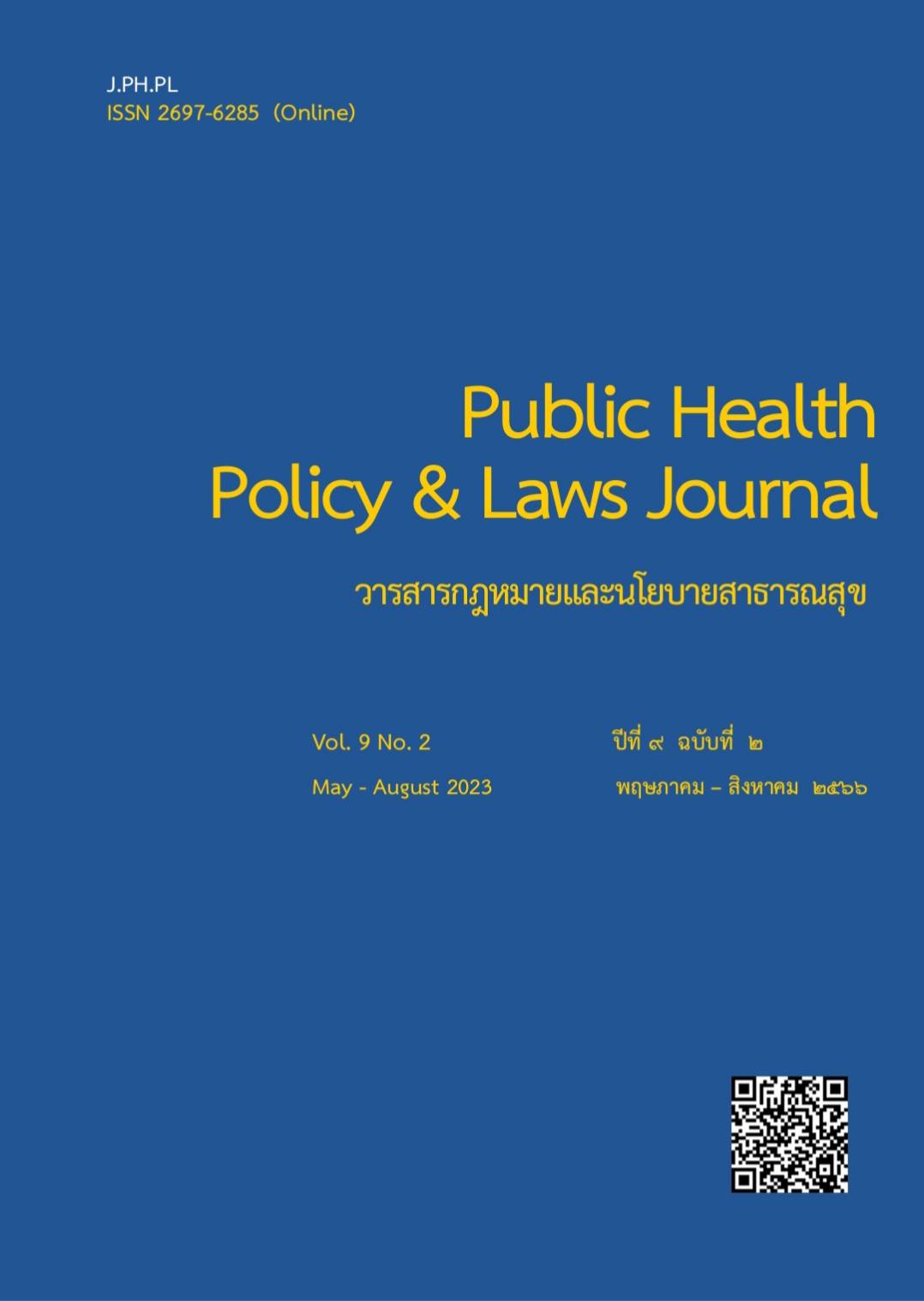Appropriate measures to reduce secondhand smoke of establishments within an industrial estate
Keywords:
secondary smoke, measures, establishment, industrial estateAbstract
The objective of this study was to study the situation of the secondhand smoke reduction implementation and recommended measures to reduce secondhand smoke in establishments within two industrial estates in Bangkok and its vicinity. This was a qualitative research study in which the primary data were collected from interviews with 39 key informants, from general observations, and secondary data collected from legal, rules and regulations, and related academic documents. The result found that workplaces Implemented the following legal, rules and regulations related to smoking control and the protection of non-smokers' health, but some limitations cause the operation to be inefficient, such as the attitude and behavior of the employees, location restrictions, and the type of the industrial establishment, etc. For appropriate measures to reduce secondhand smoke and smoking among employees, cooperation from all sectors must be achieved. Especially, the establishment of clear and rigorous management policies, as well as organizing of appropriate health promotion activities that meet the needs of employees. In this regard, we should indicate clearly non-smoking areas or appropriate smoking areas, enforcing tobacco control law strictly and continuously, and increasing incentives for the workplaces to implement. This can increase successful implementation of secondhand smoke reduction and achieving a health promoting workplaces for employees.
References
Industrial Estate Authority of Thailand. (2022). Roles and responsibilities of the organization. [Internet]. (Cited December 20, 2022). Available from: http://www.ieat.go.th/about/roles-responsibilities.
Khongtong, P. (2015). Factors Related to Smoking in Working-Age Men. Thailand Journal of Health Promotion and Environmental Health. 38(2), 91-102.
National Statistical Office. (2014). Executive Summary of the Smoking and Drinking Behavior Survey of the Population 2014. [Internet]. (Cited May 26, 2017). Available from: https://www.nso.go.th/sites/2014/DocLib13/Forms/AllItems.aspx.
Pitchayakulmongkol, C. (2011). The WHO Framework Convention on Tobacco Control – FCTC. [Internet]. (Cited September 14, 2016). Available from: http://www.ashthailand.or.th/content_attachment/attach/d560a16afca572463e8f4ed1e60de7e.pdf.
Prakit Vathesatogkit. (2010). Secondhand Smoke: The Dangers of Cigarettes We Don't Smoke (4th ed.) Bangkok: Ruks Pim Limited Partnership.
Rattanapan, C., Khiewyoo, J., Raiviboo, S. & Anuri, I. (2014). The Relationship Between Smoke-free Workplacesand Success in Smoking Cessation among Patientswith Chronic Disease in Mahasarakham Province. Thai Journal of Public Health, 44(3), 300-12.
Thongkanya, R. & Preechawong, S. (2014). Factors Predicting Second-hand Smoke Avoidance Behavior in Chronic Illness Patients, Bangkok Metropolis. Journal of The Royal Thai Army Nurses. 15(2), 331-338.
Upayokin, P. (2014). A Social Control Model for Smoking Cessation: Integrating Cooperation between Community network and the public health service system at the community level. CONNEXION Journal of Humanities and Social Sciences. 3(2), 46-68.
Downloads
Published
How to Cite
Issue
Section
License
Disclaimer and Copyright Notice
The content and information presented in articles published in the Journal of Law and Public Health Policy represent the opinions and sole responsibility of the respective authors. The editorial board does not necessarily agree with or assume any responsibility for the views expressed.
All articles, data, content, images, and other materials published in the Journal of Law and Public Health Policy are the intellectual property of the journal. Any individual or organization wishing to reproduce, distribute, or otherwise use the entirety or any part of such materials must provide proper citation.





